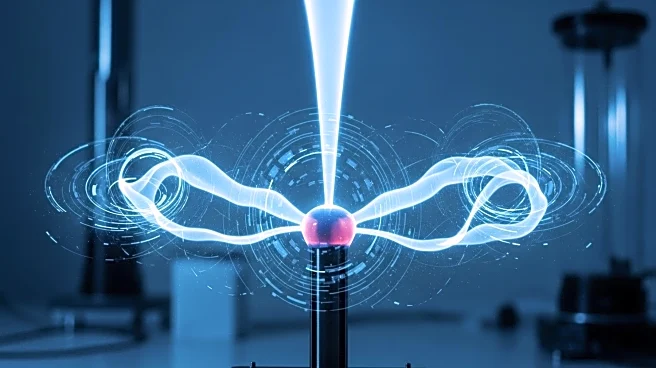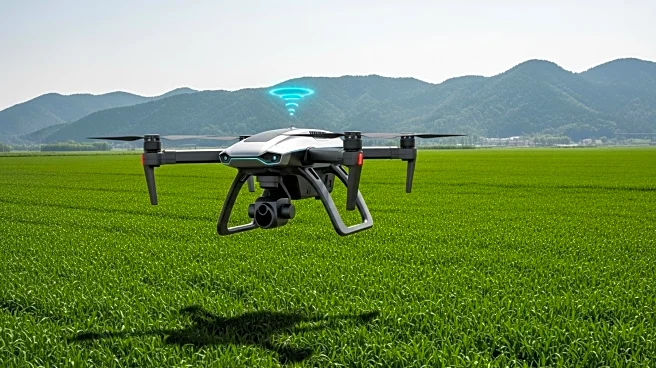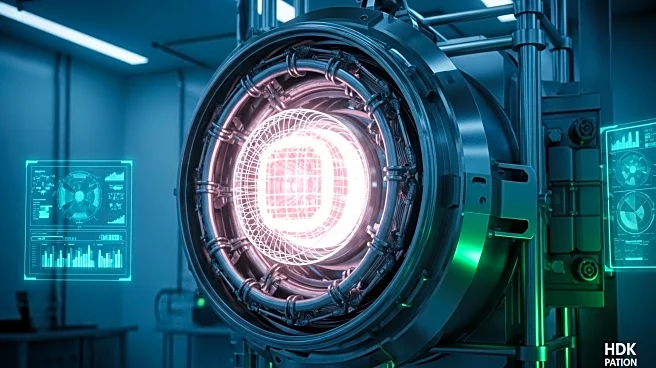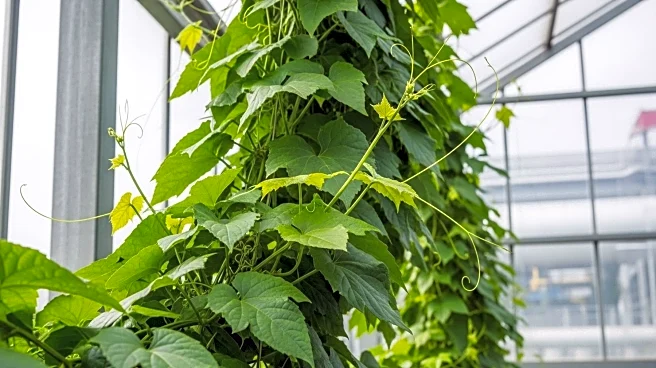What's Happening?
Researchers at the University of Sydney have developed a compact plasma device capable of converting air into ammonia gas using electricity. This innovation could lead to cleaner fertilizer production, reducing air pollution and lowering costs for farmers. The new method challenges the traditional Haber-Bosch process, which is energy-intensive and relies on fossil fuels. The Sydney team uses a small plasma unit to energize nitrogen and oxygen, which are then processed through a membrane-based electrolyzer to produce gaseous ammonia. This approach eliminates the need for a liquid byproduct step, making the process more efficient. The development is seen as a significant step towards sustainable ammonia production, with potential applications in agriculture and beyond.
Why It's Important?
The breakthrough in ammonia production has significant implications for agriculture and environmental sustainability. Ammonia is crucial for global food production, and a cleaner production method could stabilize costs for farmers and consumers. Additionally, reducing reliance on fossil fuels for ammonia production can decrease the chemical industry's environmental impact. The innovation also opens possibilities for ammonia to be used as a hydrogen carrier and a clean fuel for ships, further extending its benefits to the energy and transport sectors. This development represents a shift towards more sustainable industrial practices, with potential economic and environmental gains.
What's Next?
The next steps involve improving the efficiency of the electrolyzer component to make the system fully viable. If successful, this technology could enable local fertilizer production, reducing transportation costs and supply chain vulnerabilities. The research team aims to scale the plasma process for broader application, potentially transforming agricultural practices and contributing to a more sustainable food system. Further research will focus on optimizing the technology for different environments and exploring additional applications in energy and transport.
Beyond the Headlines
This innovation is part of a broader trend in scientific research aimed at reimagining foundational industrial processes. Similar projects include bio-manufacturing with engineered living materials and converting livestock manure into biochar. These efforts reflect a growing emphasis on sustainability and efficiency in industrial practices, with long-term implications for global food security and environmental health.











